[Excerpt reprinted from Jesus, the Gentle Parent: Gentle Christian Parenting by L.R.Knost. Two Thousand Kisses a Day: Gentle Parenting Through the Ages and Stages; Whispers Through Time: Communication Through the Ages and Stages of Childhood; and The Gentle Parent: Positive, Practical, Effective Discipline by L.R.Knost also available on Amazon and through other major retailers.]
~~~~~~~~~~~~~~
“But we proved to be gentle among you, as a nursing mother tenderly cares for her own children.”
1 Thessalonians 2:7
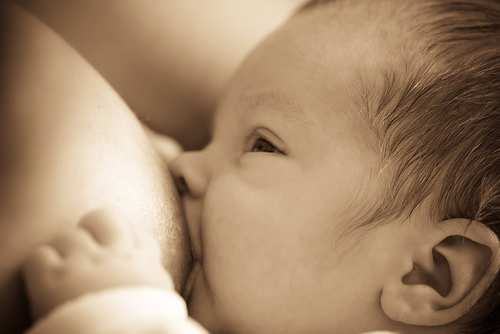 Jesus’ mother, Mary, didn’t practice attachment parenting when raising little Jesus. The Bible does tell us that she breastfed Jesus, “Blessed is the mother who gave you birth and nursed you.” (Luke 11:27). The culture of the time tells us that she likely coslept with him in the small, one or two room house typical of that period and that she wore him close to her heart in the daylight hours in a wrap to keep him safe from the snakes and scorpions and other dangers that populated the region. So it is certain that she was a breastfeeding mama and almost certain that she was a cosleeping and babywearing mama.
Jesus’ mother, Mary, didn’t practice attachment parenting when raising little Jesus. The Bible does tell us that she breastfed Jesus, “Blessed is the mother who gave you birth and nursed you.” (Luke 11:27). The culture of the time tells us that she likely coslept with him in the small, one or two room house typical of that period and that she wore him close to her heart in the daylight hours in a wrap to keep him safe from the snakes and scorpions and other dangers that populated the region. So it is certain that she was a breastfeeding mama and almost certain that she was a cosleeping and babywearing mama.
But Mary didn’t practice attachment parenting as she was growing a tiny Savior. She simply parented Jesus in the naturally instinctive way that mothers have mothered their little ones since time began. Attachment parenting is merely a term coined much later to tie these natural parenting choices and others in with the modern research of psychologists like John Bowlby who found that the healthiest emotional and relational adults tended to have strong early attachments with a parent or primary caregiver.
The Bible reinforces those research findings by not just referring to breastfeeding as providing life-sustaining nutrition, but also as a source of comfort and connection, “For you will nurse and be satisfied at her comforting breasts.” (Isaiah 66:11)
God’s biological design for breastfeeding weaves a developing infant’s needs with a mother’s needs into a delicately synchronized dance, and even daddies get in on the dance! There is an inbuilt, biochemical response to the birth of a baby that affects both sexes in similar, though somewhat different ways. As the birth of a new baby nears, a mother’s oxytocin level, known as the ‘love hormone’ because of its ability to create warm feelings of safety and attachment, increases as part of the preparation for bringing a new life into the world and sustaining that life at her breast. Daddies also experience a rise in oxytocin, as well as an increase in estrogen, which results in their brains being pre-wired to love and protect their mate and offspring. Then, after birth and throughout the breastfeeding relationship, oxytocin levels in mamas and daddies remain elevated, rising and falling in rhythmic peaks and valleys in response to a baby’s ever-changing needs. This is no accident of nature. This is a beautiful biological design.
This lovely and perfect design also reveals itself in the balance of nutrients present in breastmilk. Breastmilk has the perfect composition of calories, nutrients, fats, and other components to ensure the optimal development of a growing infant. The composition of breastmilk shifts to accommodate growth spurts, sicknesses, and other needs throughout a mother and child’s nursing relationship. Interestingly, the ratios of each of the components change throughout the day to offer the most energy during the daylight hours and the highest concentrations of sleep-inducing nucleotides during nighttime feeding, so if a mama is pumping and storing breastmilk, it’s important to label the time of day the milk was pumped to avoid giving the more stimulating daytime milk at night!
Beyond the nutritional and bonding benefits of breastfeeding, there are also amazing health benefits to both mama and baby:
A reduction in the risk of SIDS, asthma, childhood leukemia, diabetes, gastroenteritis, otitis media (ear infections), LRTIs (pneumonia, bronchitis, etc), necrotizing enterocolitis, and obesity are just some of the protective benefits for babies. For mothers, breastfeeding has been correlated with a significant decrease in the risk of diseases such as breast cancer, ovarian cancer, diabetes, and heart disease to name just a few.
Additionally, the Journal of the American Academy of Pediatrics released a study in April of 2010 that concluded, “The United States incurs $13 billion in excess costs annually and suffers 911 preventable deaths per year because our breastfeeding rates fall far below medical recommendations.” Those numbers are only based on breastfeeding benefits for the first six months of life. The World Health Organization, American Academy of Pediatrics, Centers for Disease Control, and others recommend breastfeeding for the first two years of a child’s life. Imagine the tally if the researchers had looked at the lives lost and billions of dollars spent unnecessarily in a two year breastfeeding scenario instead of a six month scenario. (Two Thousand Kisses a Day: Gentle Parenting Through the Ages and Stages)
Some stumbling blocks in the breastfeeding relationship that mamas may encounter include the modern societal view of breasts as solely sexual objects which often leads those in public places, including many churches, to shame mothers into hiding in restrooms or vehicles or at the very least using covers that make breastfeeding far more difficult and clumsy than it needs to be. Biblically speaking, breasts are referred to half as often in reference to sexual relationships as they are in reference to the God-designed breastfeeding relationship between mothers and their little ones. Again, that is no accident!
Breastfeeding is not shameful and should not be hidden. As one of our current world leaders, Pope Francis, said during a 2014 baptism ceremony at the historic Sistine Chapel,
“Today the choir will sing, but the most beautiful choir of all is the choir of the infants who will make a noise. Some will cry because they are not comfortable or because they are hungry,” Francis said, according to Reuters. “If they are hungry, mothers, feed them, without thinking twice. Because they are the most important people here.”
He didn’t tell them to leave or to cover up or to make their babies wait. He tenderly told the young mothers to feed their babies when they’re hungry. End of story.
Another stumbling block to a healthy, full-term breastfeeding relationship is the increasingly prevalent diagnosis of low milk supply:
Even though mothers’ bodies are capable of miraculously growing a human being for nine months and bringing that precious new life into the world, those same life-giving bodies seem to be failing in ever-increasing numbers to provide life-giving nutrition to those precious babies because of issues with low milk supply.
Why is this happening? For some, it is certainly just pediatricians using formula-fed babies’ growth charts instead of breastfed babies’ charts or family and friends who believe that all babies should be chubby and content that lead new mothers to believe they have low supply, but there does appear to be an increasing number of babies legitimately labeled as failure-to-thrive with low milk supply determined to be the cause. (Two Thousand Kisses a Day: Gentle Parenting Through the Ages and Stages)
Often the low milk supply is caused by forcing babies to sleep alone and training them to sleep through the night. The fact is that babies aren’t biologically designed to sleep through the night. They are, though, biologically programmed to crave closeness with their mothers, and their proximity to and access to the breast throughout the night stimulates ongoing production of breastmilk, keeping up the mother’s supply naturally.As a simple matter of survival, it makes biological sense that God would build into babies a need to be near their primary source of safety, nutrition, and comfort:
Babies biologically should not sleep through the night. Not only is the deep sleep required to sleep through the night actually a recognized factor in SIDS (Sudden Infant Death Syndrome), but babies who sleep through the night are also not nursing to stimulate breastmilk production, thus their mother’s milk may begin to dry up. Clearly, that’s not a healthy biological design. (Two Thousand Kisses a Day: Gentle Parenting Through the Ages and Stages)
The bottom line is that breastfeeding is a biological norm created by God to meet a baby’s needs in the healthiest and most convenient way. That said, there are certainly times when a mother can’t breastfeed due to a medical condition, life circumstances, adoption, or other factors. In those cases mamas can still achieve a healthy attachment and strong, loving relationship and even boost their oxytocin ‘love hormone’ levels by holding their little ones close to their hearts during feeding, making eye contact and exchanging smiles and coos and giggles, kissing and nuzzling their babies’ fuzzy little heads, keeping their little ones close during the day in a baby wrap or sling, taking time out for a few periods of ‘kangaroo care’ each day, and meeting nighttime needs quickly, gently, and consistently. (end excerpt)
Related posts:
Ten Steps to Surviving the First Three Months with a Newborn
Love in the Time of Cosleeping
300+ Nicknames for Your Babykins…Doodlebug…Snugglebunny…
Babywearing Basics Resource Guide
Breastfeeding, Babywearing, and Bouncing Back into Shape after Baby
Jesus, the Gentle Parent: Gentle Christian Parenting
Tattered Tapestries: Weaving Trust Through the Chaos
Fear Doesn’t Lead to Faith: Becoming Your Child’s Safe Place
Where Did You Learn Love, Child?
Spare the Rod: The Heart of the Matter
Gentle Journeys: A Book Club for a New Generation
 Award-winnning author, L.R.Knost, is the founder and director of the children's rights advocacy and family consulting group, Little Hearts/Gentle Parenting Resources, and Editor-in-Chief of Holistic Parenting Magazine. Books by L.R.Knost include Whispers Through Time: Communication Through the Ages and Stages of Childhood ; Two Thousand Kisses a Day: Gentle Parenting Through the Ages and Stages ; The Gentle Parent: Positive, Practical, Effective Discipline ; and Jesus, the Gentle Parent: Gentle Christian Parenting the first four books in the Little Hearts Handbook gentle parenting series, and children’s picture books Petey’s Listening Ears and the soon-to-be-released Grumpykins series.
Award-winnning author, L.R.Knost, is the founder and director of the children's rights advocacy and family consulting group, Little Hearts/Gentle Parenting Resources, and Editor-in-Chief of Holistic Parenting Magazine. Books by L.R.Knost include Whispers Through Time: Communication Through the Ages and Stages of Childhood ; Two Thousand Kisses a Day: Gentle Parenting Through the Ages and Stages ; The Gentle Parent: Positive, Practical, Effective Discipline ; and Jesus, the Gentle Parent: Gentle Christian Parenting the first four books in the Little Hearts Handbook gentle parenting series, and children’s picture books Petey’s Listening Ears and the soon-to-be-released Grumpykins series.
May 22, 2014 | Categories: attachment parenting, babywearing, Bible, birth, breastfeeding, cosleeping, gentle parenting, Jesus, life, motherhood, natural parenting, newborn, nursing, parenting guide, pregnancy, sleep issues, soothing, toddler | Tags: attachment parenting, babywearing, Bible, breastfeeding, Christian, cosleeping, Jesus, kangaroo care, newborn, parenting, toddler | 2 Comments »
[By L.R.Knost, author of Two Thousand Kisses a Day: Gentle Parenting Through the Ages and Stages, Whispers Through Time: Communication Through the Ages and Stages of Childhood, and The Gentle Parent: Positive, Practical, Effective Discipline available on Amazon and through other major retailers.]
~~~~~~~~~~~~~~~~~~~~~
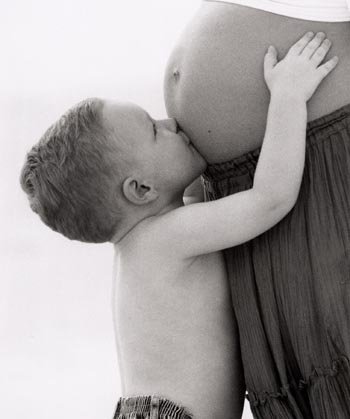 Pregnancy is a time of introspection, excitement, and, often, anxiety for most new mamas. When those new mamas also have other small children at home, that anxiety can become overwhelming as they worry about how they’ll cope with more than one child and how the current little loves of their life will cope with a new sibling. While these are very valid concerns, there are steps you can take to prepare your child for a new sibling and help them to adjust when the new baby arrives that will also help you to cope with life as a mama of more than one little blessing.
Pregnancy is a time of introspection, excitement, and, often, anxiety for most new mamas. When those new mamas also have other small children at home, that anxiety can become overwhelming as they worry about how they’ll cope with more than one child and how the current little loves of their life will cope with a new sibling. While these are very valid concerns, there are steps you can take to prepare your child for a new sibling and help them to adjust when the new baby arrives that will also help you to cope with life as a mama of more than one little blessing.
Once you discover you’re expecting, you’ve got months and months to prepare your child for the arrival of a new sibling, so here are 25 tips for during your pregnancy and after the new baby arrives to make the new baby transition a smoother and sweeter journey for everyone:
- Help your older child make their own ‘sister/brother on the way’ announcements so they feel like they are part of the transition from the beginning.
- Bring them along to sonograms, doctor’s appointments, shopping for baby things, etc.
- Reassure them that parents’ love multiplies instead of divides and that they will always be loved and important. Point out other families with more than one child so they can see that truth for themselves. If they’re old enough to understand, try a simple illustration such as letting them put different colors of water beads, one for each family member including the baby-on-the-war, into a glass of water. Tell them the water is like love, and it grows the beads into a rainbow of beautiful colors just like love grows our hearts bigger and bigger so there’s plenty of love for everyone.
- Present the new baby-on-the-way as ‘theirs,’ a special gift sent just for them so they will have a best friend for life. Talk about their friends who have siblings and how they always have someone to play with and someone to help them when they need it.
- Find children’s books about welcoming a new sibling, taking care of a new baby, when mommy breastfeeds, etc. to read to them before the birth. Here is a great list to get you started.
- Let them help decorate the nursery, put together the stroller, pack up the hospital bag (or prepare for your homebirth), buckle in the car seat, etc.
- Ask the person giving your baby shower to let your child ‘co-host’ and help with the party planning, set-up, serving snacks, and playing games.
- Help them make a special ‘welcome’ gift for the new baby and wrap it in paper they’ve decorated with stamps or finger paint.
- Buy them a special ‘welcome’ gift that you give them when they visit their new sibling for the first time. One idea is to buy them a child-sized baby carrier along with a doll, some diapers, wipes, mini baby blankets, etc. so they can take care of their baby while you take care of yours.
- Help them make their own family scrapbook with places to put the new baby’s pictures and pictures of them with their new little sibling when the new baby comes.
- Tell them stories about when they were born and show them pictures of their homecoming and first weeks of life.
- Let them help you work on updating their baby book.
- Take them to pick out a baby book for the new baby.
- Begin an open-ended conversation about how they’re feeling about having a new baby in the family to allow them to express their natural worries about how their role in the family might change, if they will still be able to play with their own toys, if the baby will cry a lot, etc. Continue this conversation throughout your pregnancy and after the new baby arrives to keep the communication lines open and your connection intact.
- Take them to visit the hospital and stop at the gift shop to buy a baby gift and a little treat for them to build excitement.
- Have lunch at the hospital cafeteria two or three times leading up to your birth to help them get used to the environment.
- Work on building other attached relationships with significant adults in your child’s life (spouse, grandparents, aunts, uncles, etc.) so that your little one is used to having their needs attended to by someone other than mama at times and so they can play and get one-on-one time with another caregiver while mama is busy with the new baby.
- On their first visit with their new sibling, let them sit in bed with you and hold their new little sibling. Have a ‘big sister/brother’ t-shirt for them to wear and take lots of pictures of both of them together and with other family members. Ask whoever you have caring for your older child to stop on the way home to print out a few of the pictures and then help them put the pictures in the scrapbook they created with you at home.
- When the new baby arrives continue to present the baby as ‘theirs’ to love and enjoy and care for. Include them in helping with diaper changes, snuggling on your other side with storybooks for you to read while nursing/feeding the new baby, singing the baby to sleep, etc. Make sure you invite them to participate instead of insisting because they may need some time to adjust to the newness of everything before they’re ready.
- Keep your expectations in line with your child’s developmental stage and make accommodations whenever possible. For instance, expecting a toddler to willingly give up their crib to a new baby is probably unrealistic. Moving your toddler to a new bed early in your pregnancy and then involving them in getting the crib ready for the new baby later on, after they’ve adjusted to their new bed, might be more successful.
- If your older child is a toddler or preschooler, you can expect some regression into babyish behavior as they work to adjust to their new role and find their place in the new family dynamic. Don’t respond with punishment, shaming, or pressure to ‘be a big boy or girl.’ Instead allow them the space and time they need to explore how it feels to be a baby again while at the same time drawing their attention to the benefits of being the older sibling (i.e. “Look how you can walk on your strong legs wherever you want to go! Your baby sister can’t walk yet, can she?” or “Wow, you can pick out your own shoes and even put them on yourself! Your baby brother can’t do that yet, can he?” or “Look at all the yummy foods you get to eat. It’s nice being bigger so you don’t have to just have milk, isn’t it?”)
- Be specific about how your child should treat the new baby. Instead of “Be nice!” try “Can you use a kind voice with your brother?” and instead of “Don’t be so rough!” try “Can you give your sister a gentle hug?”
- Make sure your child’s boundaries are clear and consistent. If you let them hop around the baby’s bouncer to make the new baby laugh one day, you can be sure they’ll try bouncing around the baby’s bouncer again and again and again. If you think that’s dangerous, set a clear boundary, explain the reason for the boundary, and give them an alternative (i.e. “Hopping next to the baby is dangerous. You might fall on the baby and hurt him! That would make you sad, and the baby would be sad, too. If you need to hop, you can hop like a bunny over here next to me.”)
- Keeping a consistent, familiar routine for your older child will help them to feel less out-of-control as they adjust to all of the other changes going on in their life. Make sure you’re flexible and in-tune with your child’s changing needs, though. They will most likely communicate their natural anxiety at this big transition in the family with some acting out behaviors, clinginess, whining, and/or resistance to bedtime and other normal routines. For instance, they may have been fine with one story and a hug at bedtime before the new baby arrived, but after their new sibling comes home they may need extra cuddles, time, and the reassurance of your love and ongoing commitment to their wellbeing before they’re able to go to sleep.
- Talk, talk, talk to your little ones throughout each and every day. Your hands may be busy more often than not, but you can still maintain that all-important connection through communication!
Keep in mind that nothing will completely eliminate the possibility of some jealousy, regression, or acting out when a new baby arrives because it’s a huge transition and it will take time for everyone in the family to adjustment, but these suggestions will go a long way toward setting the stage for the smoothest transition possible.
 Related posts:
Related posts:
Ten Steps to Surviving the First Three Months with a Newborn
The Gift of Breastfeeding
Love in the Time of Cosleeping
300+ Nicknames for Your Babykins…Doodlebug…Snugglebunny…
Babywearing Basics Resource Guide
Breastfeeding, Babywearing, and Bouncing Back into Shape after Baby
The Thoughtful Parent’s Guide to Positive Parenting Guides
12 Steps to Gentle Parenting
The Taming of the Tantrum: A Toddler’s Perspective
Practical, Gentle, Effective Discipline
10 Ways to Play with your Children when Play is the Last Thing on your Mind
200 Ways to Bless Your Children with a Happy Childhood
 Award-winnning author, L.R.Knost, is the founder and director of the children's rights advocacy and family consulting group, Little Hearts/Gentle Parenting Resources, and Editor-in-Chief of Holistic Parenting Magazine. Books by L.R.Knost include Whispers Through Time: Communication Through the Ages and Stages of Childhood ; Two Thousand Kisses a Day: Gentle Parenting Through the Ages and Stages ; The Gentle Parent: Positive, Practical, Effective Discipline ; and Jesus, the Gentle Parent: Gentle Christian Parenting the first four books in the Little Hearts Handbook gentle parenting series, and children’s picture books Petey’s Listening Ears and the soon-to-be-released Grumpykins series.
Award-winnning author, L.R.Knost, is the founder and director of the children's rights advocacy and family consulting group, Little Hearts/Gentle Parenting Resources, and Editor-in-Chief of Holistic Parenting Magazine. Books by L.R.Knost include Whispers Through Time: Communication Through the Ages and Stages of Childhood ; Two Thousand Kisses a Day: Gentle Parenting Through the Ages and Stages ; The Gentle Parent: Positive, Practical, Effective Discipline ; and Jesus, the Gentle Parent: Gentle Christian Parenting the first four books in the Little Hearts Handbook gentle parenting series, and children’s picture books Petey’s Listening Ears and the soon-to-be-released Grumpykins series.
August 26, 2013 | Categories: anxiety, attachment parenting, babywearing, birth, breastfeeding, children's books, communication, cosleeping, family, gentle parenting, motherhood, newborn, positive parenting, pregnancy, preschooler, toddler, Uncategorized | Tags: breastfeeding, new baby, newborns, nursing, parenting, pregnancy, preschoolers, siblings, toddlers | 5 Comments »
[By L.R.Knost, author of Two Thousand Kisses a Day: Gentle Parenting Through the Ages and Stages, Whispers Through Time: Communication Through the Ages and Stages of Childhood, and The Gentle Parent: Positive, Practical, Effective Discipline available on Amazon and through other major retailers.]
~~~~~~~~~~~~~~~~~~~~~
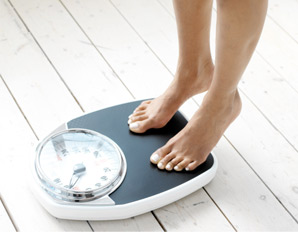 There is no such thing as a ‘miracle’ weight-loss plan, but living a healthy, active life and eating nutritious meals doesn’t have to be all about sweat, sacrifice, and self-discipline, either. It can be about having fun, eating foods you love, and, best of all, it can fit right in with your lifestyle! By following a few basic nutritional guidelines and finding ways to fit exercise into your daily life, you can create your own ‘life plan’ and start moving toward your weight-loss and health goals.
There is no such thing as a ‘miracle’ weight-loss plan, but living a healthy, active life and eating nutritious meals doesn’t have to be all about sweat, sacrifice, and self-discipline, either. It can be about having fun, eating foods you love, and, best of all, it can fit right in with your lifestyle! By following a few basic nutritional guidelines and finding ways to fit exercise into your daily life, you can create your own ‘life plan’ and start moving toward your weight-loss and health goals.
1.) Practice the 3 B’s
Breastfeeding~Did you know that one of the best ways to lose weight after giving birth is to breastfeed? Breastfeeding uses about 300-500 of the calories you eat each day. That means if you eat the full amount of daily recommended calories for your weight, you’re actually dieting! I don’t recommend calorie-counting as a means of weight loss, but that’s a pretty cool fact, anyway! And when you add the fact that breastfeeding significantly reduces your risk of breast cancer and is super healthy for baby…win-win-win!
Babywearing ~Did you know that in addition to all of the amazing benefits to your baby, babywearing also offers you an excellent opportunity for a daily workout? Wearing your baby works your core and glutes specifically and gives you a full body workout, as well! Who needs a gym when housecleaning, walks on the beach, strolls through the mall, and just daily life in general are an excellent workout, all while keeping baby next to your heart and close enough for kisses?!?
Bouncing~Did you know that kegels can actually do more harm than good? Shallow knee bends like the ones mommies use instinctively when they bounce to soothe a fussy baby are the preferred method of improving the pelvic girdle! So say goodbye to the sneezing/laughing ‘leakies’ and hello to buns and thighs of steel!
2.) Healthy Eating, It Does a Body Good
Did you know that a low fat diet can actually make you fat? A diet of full-fat milk, real butter, real cane sugar, extra virgin olive oil, coconut oil, fat-marbled meat, eggs, nuts of all kinds, cheeses, fruits, veggies, and whole grain pastas and breads is far more likely to help you lose weight and maintain a healthy weight for life.
Along with enjoying these yummy foods, you’ll lose weight faster and be overall healthier by avoiding High Fructose Corn Syrup (HFCS – it’s in practically everything…breads, juices, jellies, etc…so you’ll have to read labels carefully!) and other corn-derived syrups and sugars, along with food dyes, margarine, vegetable/canola/safflower oils, and artificial sweeteners.
If you’ve got a sweet-tooth, denying yourself a treat can lead to overeating as you try to satisfy that urge with other foods. One way to combat that is to indulge in a small amount of ice cream (without HFCS or other corn syrups!) or dark chocolate, preferably in the evening because raising your blood sugar earlier in the day tends to increase your appetite for the rest of the day.
Keep in mind, letting yourself become hungry is one of the surest paths to overeating! It’s far better to eat multiple, small, snack-type meals throughout the day than to wait for meals when you’ll be hungrier and more likely to eat too much. Other benefits to ‘snacking’ instead of eating three full-on meals are 1.) Maintaining a consistent blood sugar, which aids in appetite control and helps your body escape the ‘survival’ instinct to store fat; 2.) Reducing your appetite naturally by eating smaller amounts at a time which helps your stomach to shrink; and 3.) Increasing your metabolism by consistently keeping your digestive system heated up in ‘burn mode.’
Sample meal plan:
1st Breakfast~
¼ cup almonds & ¼ cup raisins
2nd Breakfast~
1 whole egg (Yes, eat the yolk, too! That’s where most of the healthy nutrients are.)
1 Whole wheat English muffin with real butter and ¼ cup natural fruit preserves
8 oz. cottage cheese
Elevensees~
½ cup pretzels & 2 oz. whole-fat cheese
Lunch~
Spinach salad with ¼ cup shredded carrots, ¼ cup dried apricots or cranberries, 2 oz. whole-fat shredded cheese, 4 oz. shredded pork, 2 tbs. minced almonds or sunflower seeds , and 2-4 tbs. Balsamic Vinaigrette (Read the label and watch out for HFCS!)
Tea~
8 oz. yogurt & ¼ cup granola & ¼ cup berries
Supper~
Fettucini Alfredo, Meatball Sub, Pizza, whatever you want! Just fill up your plate as you normally would, then put back half. After you eat, wait 20 minutes and, if you’re still hungry, eat ¼ of what you put back. (Supper is where most people ‘fail’ because that’s the time most social eating occurs. Rather than denying yourself and setting yourself up for failure, this plan allows you to enjoy the foods and social life you’re accustomed to, while still cutting out ¼ to ½ of the calories you’d normally eat at this meal.)
Dessert~
For those with a sweet tooth, after supper is the best time for a few ounces of dark chocolate or ice cream! Pastries and cakes aren’t good choices for a treat, but if you indulge occasionally, no worries 🙂
Bedtime snack~
¼ cup almonds & ¼ cup dried pomegranates or cranberries
You can take this sample plan and switch out items from the same food group so it fits your tastes. For instance, if you don’t like salads, you could switch out the lunch salad with a baked whole grain pork burrito and top it with lettuce, tomato, cheese, etc. Just try to make sure that for every protein/fruit/veggie/dairy you take out, you put the same amount back in. (Sorry about The Hobbit reference. I couldn’t resist!)
3.) A Grateful Heart is a Healthy Heart
Science has proven that a good outlook on life improves not only the quality of a person’s life, but also the length and health aspects of their life. Taking time to intentionally focus on the good things in your life will improve your health, satisfaction, and overall happiness. Here are some ideas:
A.) Get outdoors! Heading out into the sunshine has been shown to improve a person’s mood as well as their health. There’s something about standing in the midst of towering trees or watching butterflies flutter by in the garden that makes stress just melt away. (And a daily dose of sunshine-induced Vitamin D is good for your bones!)
B.) Walka-Walka-Walka! Walking improves circulation and deepens breathing, both of which will make you feel more alive and ready to take on the world!
C.) Count your blessings! Taking time each day to list and be thankful for the good things in your life helps to create balance, making life feel more manageable when it begins to feel overwhelming.
D.) Volunteer! Reaching out to help your fellow humans in need is a great way to make your life feel a lot more purposeful and to help you get a healthy perspective on the stresses in your life.
E.) Laugh out loud! We all type that little ‘lol’ all the time when we’re online, but did you know that actually doing it, really and truly laughing out loud, releases stress-relieving, feel-good endorphins in our bodies? So watch a comedy routine, catch a funny old sit-com rerun, or just sit and enjoy a child playing for ten minutes, and you’ll be sure to laugh away the blues!
*Obligatory disclaimer: I am not a doctor, nor do I play one on TV. This is a guide (not a diet) that I created to return to my pre-pregnancy (Well, pre-pregnancies, actually, since I have six children!) shape and weight in a healthy and swift fashion and that I continue to follow for weight maintenance and healthy nutrition. This guideline is not designed for special health needs. Be sure to check with your doctor or other health professional if you have any health concerns.
Related posts:
The Gift of Breastfeeding
Babywearing Basics Resource Guide
Picky Eater? Here’s Help!
10 Ways to Play with your Children when Play is the Last Thing on your Mind
Parenting, Trickery & The Great Obesity Lie
 Award-winnning author, L.R.Knost, is the founder and director of the children's rights advocacy and family consulting group, Little Hearts/Gentle Parenting Resources, and Editor-in-Chief of Holistic Parenting Magazine. Books by L.R.Knost include Whispers Through Time: Communication Through the Ages and Stages of Childhood ; Two Thousand Kisses a Day: Gentle Parenting Through the Ages and Stages ; The Gentle Parent: Positive, Practical, Effective Discipline ; and Jesus, the Gentle Parent: Gentle Christian Parenting the first four books in the Little Hearts Handbook gentle parenting series, and children’s picture books Petey’s Listening Ears and the soon-to-be-released Grumpykins series.
Award-winnning author, L.R.Knost, is the founder and director of the children's rights advocacy and family consulting group, Little Hearts/Gentle Parenting Resources, and Editor-in-Chief of Holistic Parenting Magazine. Books by L.R.Knost include Whispers Through Time: Communication Through the Ages and Stages of Childhood ; Two Thousand Kisses a Day: Gentle Parenting Through the Ages and Stages ; The Gentle Parent: Positive, Practical, Effective Discipline ; and Jesus, the Gentle Parent: Gentle Christian Parenting the first four books in the Little Hearts Handbook gentle parenting series, and children’s picture books Petey’s Listening Ears and the soon-to-be-released Grumpykins series.
June 24, 2012 | Categories: attachment parenting, baby led weaning, babywearing, birth, breastfeeding, cosleeping, food, motherhood, natural parenting, newborn, nursing, pregnancy, soothing, toddler, Uncategorized | Tags: attachment parenting, babywearing, breastfeeding, exercise, health, healthy eating, natural parenting, newborn, nursing, nutrition, parenting, pregnancy, toddlers | 7 Comments »
[Portions reprinted from Two Thousand Kisses a Day: Gentle Parenting Through the Ages and Stages by L.R.Knost. Whispers Through Time: Communication Through the Ages and Stages of Childhood, and The Gentle Parent: Positive, Practical, Effective Discipline also available on Amazon and through other major retailers.]
A newborn baby has only three demands. They are warmth in the arms of its mother, food from her breasts, and security in the knowledge of her presence. Breastfeeding satisfies all three. ~Grantly Dick-Read
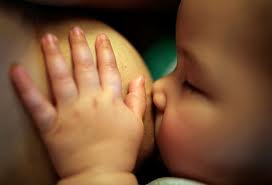 Breastfeeding~Best for Babes
Breastfeeding~Best for Babes
Breastfeeding, like exercise, is one of the most highly preventive and cost-effective ways to protect the health of mothers, babies, the population, and the planet. Yet, the U.S. has one of the lowest rates of breastfeeding among industrialized countries and one of the highest rates of infant mortality. Our rates of breast cancer, diabetes, obesity, and asthma are growing at an alarming pace. It is estimated that normal breastfeeding rates could save the U.S. $13 billion and 911 lives annually on health care & associated costs for just 10 diseases.
Sweet, milky giggles
Baby’s trusting eyes look up
Forging bonds that last. R.H.
Latch and Positioning
Excellent information from Kellymom about how to get a comfortable latch and position for nursing.

The Guggie Daily: God Wants to Breastfeed His People
God is not just supportive, but is the ultimate breastfeeding (and babywearing- “he will carry them in his bosom”) advocate!
 The Normal Newborn & Why Breastmilk isn’t Just Food
The Normal Newborn & Why Breastmilk isn’t Just Food
“A newborn baby on mom’s chest will pick their head up, lick their hands, maybe nuzzle mom, lick their hands and start to slide towards the breast. Babies have a preference for contrasts between light and dark, and for circles over other shapes. Think about that…there’s a dark circle not too far away.”

Breast Milk~The Original Soul Food
We have breasts to feed our young but we also have brains that tell us this is more than nutrition.. this is comfort, bonding, the original Soul food!

Biochemistry of Human Milk
“Breastmilk, unlike formula is a living organism. When one looks at breastmilk under a microscope there is plenty of movement. Contrast that with formula, where the petri dish reveals a stagnant state. Formula is dead. It cannot change to meet the needs of a particular infant. It does not change during a feed…”
 While I Nurse You to Sleep
While I Nurse You to Sleep
Lovely thoughts from a breastfeeding mama.
 What Kind of Woman Breastfeeds a Toddler?
What Kind of Woman Breastfeeds a Toddler?
An amazing array of women from every walk of life who share their breastfeeding journeys~Compiled and shared by The Mule
Low Milk Supply~Set up for failure
SIDS (Sudden Infant Death Syndrome), Asthma, Childhood Leukemia, Diabetes, Gastroenteritis, Otitis Media (ear infections), LRTIs (pneumonia, bronchitis, etc), Necrotizing Enterocolitis, Obesity, and other potentially life-altering or fatal conditions…
If you knew that there was one medicine or vitamin or herbal supplement that has been proven, PROVEN, beyond a shadow of a doubt in study after study by mainstream, published, respected doctors, researchers, and scientists, to significantly reduce the risk of every single one of those things listed above, would you give it to your baby?
Breast cancer, Ovarian Cancer, Diabetes, Heart Disease, Obesity…
What if that wonder drug could also drastically reduce your risk of each of these health threats?
13 billion…BILLION…dollars lost in the U.S. alone in PREVENTABLE medical costs.
If you knew that there was one thing you could do to save billions of taxpayer dollars that could go to feed the hungry, house the homeless, research cures for other devastating diseases, provide health care to the poor, would you do it?
The Journal of the American Academy of Pediatrics released a study in April of 2010 detailing just what that one medicine/vitamin/herbal supplement is…and the ‘miracle drug’ is 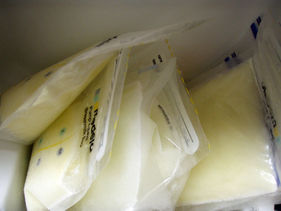 none other than BREASTFEEDING. The study concluded that, “The United States incurs $13 billion in excess costs annually and suffers 911 preventable deaths per year because our breastfeeding rates fall far below medical recommendations.” And those numbers are only based on breastfeeding benefits for the first six months of life! The World Health Organization, American Academy of Pediatrics, Centers for Disease Control, and others recommend breastfeeding for the first two years of a child’s life. Imagine the tally if the researchers had looked at the little lives lost and billions of dollars spent unnecessarily in a two year breastfeeding scenario instead of a six month scenario!
none other than BREASTFEEDING. The study concluded that, “The United States incurs $13 billion in excess costs annually and suffers 911 preventable deaths per year because our breastfeeding rates fall far below medical recommendations.” And those numbers are only based on breastfeeding benefits for the first six months of life! The World Health Organization, American Academy of Pediatrics, Centers for Disease Control, and others recommend breastfeeding for the first two years of a child’s life. Imagine the tally if the researchers had looked at the little lives lost and billions of dollars spent unnecessarily in a two year breastfeeding scenario instead of a six month scenario!
In 2009, the CDC released a Breast Feeding Report Card which showed that, while 74% of women start off breastfeeding, only 33% continue to three months and just 14% are exclusively breastfeeding by six months.
Clearly, then, the majority of women at least begin with the desire to breastfeed!
So why are breastfeeding rates so dismal in the United States? For one thing, U.S.hospitals scored a low D (63%) in their compliance with recommendations to provide breastfeeding  support for women in a 2007 CDC survey. One issue is that hospitals routinely send home ‘failure’ packets of formula with new mommies “just in case,” which sit temptingly in pretty, complementary diaperbags waiting for the inexperienced new mommy to face her first breastfeeding hurdle, her first feeding worry, her first sleep-deprived need to find any reassurance that she’s doing a good job feeding her baby during those first weeks. Another issue is that hospital lactation consultants are typically stretched far too thinly amongst many patients and are only available for a few minutes to get new mommies started, and then most insurance companies don’t cover follow-up lactation support after mommies leave the hospital. Other issues in the hospital include delaying the new mommy’s ability to begin breastfeeding immediately by removing the baby to a warming bed instead of laying the baby on the mommy’s tummy, and too early interventions such as eye ointment, bathing the baby, and taking the baby to the nursery to be evaluated in the absence of medical necessity.
support for women in a 2007 CDC survey. One issue is that hospitals routinely send home ‘failure’ packets of formula with new mommies “just in case,” which sit temptingly in pretty, complementary diaperbags waiting for the inexperienced new mommy to face her first breastfeeding hurdle, her first feeding worry, her first sleep-deprived need to find any reassurance that she’s doing a good job feeding her baby during those first weeks. Another issue is that hospital lactation consultants are typically stretched far too thinly amongst many patients and are only available for a few minutes to get new mommies started, and then most insurance companies don’t cover follow-up lactation support after mommies leave the hospital. Other issues in the hospital include delaying the new mommy’s ability to begin breastfeeding immediately by removing the baby to a warming bed instead of laying the baby on the mommy’s tummy, and too early interventions such as eye ointment, bathing the baby, and taking the baby to the nursery to be evaluated in the absence of medical necessity.
But, even so, 74% of American women triumph over these issues and leave the hospital having established breastfeeding with their newborn. So what happens then? Why does that number fall so dramatically by more than half to 33% by three months and by nearly 80% down to only 14% of women by six months?
Some contributing factors are mothers who must return to workplaces which don’t support breastfeeding with long lunches to return home to breastfeed or flexible schedules which allow for frequent pumping, and insurance companies which don’t cover lactation consultants or breast pumps, and, in a small percentage of cases, health issues with the mother or baby.
All of these issues certainly need to be addressed by hospitals, insurance companies and businesses, and the government can be of service in these areas by providing tax incentives, education, and support.
But there are still more subtle issues that negatively affect breastfeeding rates. Some of these include older mothers relishing in telling horror stories about cracked nipples, thrush, clogged ducts, etc; pediatricians who use weight charts based on formula fed infants and scaring new mothers into thinking their babies aren’t gaining enough weight; and the pervasive, but false, belief that formula is just as good as breastmilk for babies.
One issue, though, that seems to crop up far more than others is low milk supply. Somehow, even though mothers’ bodies are capable of miraculously growing a human being for nine months and bringing that precious new life into the world, those same life-giving bodies are failing to provide life-giving (and saving!) nutrition to those precious babies. Why? For some, it is certainly just fear-mongering by those pediatricians using the formula fed babies’ charts or by grandmothers who believe that all babies should be chubby that lead new mothers to believe they have low supply, but there does seem to be an ever-increasing number of babies legitimately labeled as failure-to-thrive with low milk supply labeled the cause.
that precious new life into the world, those same life-giving bodies are failing to provide life-giving (and saving!) nutrition to those precious babies. Why? For some, it is certainly just fear-mongering by those pediatricians using the formula fed babies’ charts or by grandmothers who believe that all babies should be chubby that lead new mothers to believe they have low supply, but there does seem to be an ever-increasing number of babies legitimately labeled as failure-to-thrive with low milk supply labeled the cause.
One crucial piece of false information can be blamed for the vast majority of low milk supply issues in the absence of a documented medical cause.
That false information? New mothers are told their babies should sleep through the night.
That is one of the most pernicious lies ever foisted on new parents. Babies biologically should NOT sleep through the night. Not only is the deep sleep required to sleep through the night actually a recognized factor in SIDS deaths, but babies who sleep through the night are also not nursing to stimulate breastmilk production, thus their mother’s milk begins to dry up. Clearly, that’s not a healthy biological design!
Here is a picture of what this vicious cycle can look like:
Lydia battles the lack of breastfeeding support at the hospital and triumphantly goes home a breastfeeding mother, formula ‘fail’ packet tucked securely in the chic little complementary diaperbag in the trunk along with stacks of information about how healthy formula is and lots of lovely formula coupons.
 She gets her precious baby home and settles in for her twelve week ‘babymoon’ before she has to return to work because that’s all the time her work allows. She’s already nervous about how she’s going to handle the return to work, leaving her sweet baby in someone else’s care, and trying to pump to maintain her milk supply and provide milk for her baby while she’s gone, but she pushes those thoughts aside and suppresses the anxiety as much as she can. The first few nights are pretty easy because her baby sleeps most of the time, so Lydia is able to get a little rest in between feedings. She reads up on some parenting advice in a couple of popular magazines and discovers that she should be working to schedule her baby’s feedings at 3-4 hour intervals. That makes her feel a bit worried because she’s just been feeding her baby whenever he seemed hungry, so she gets a notebook out and writes down a schedule.
She gets her precious baby home and settles in for her twelve week ‘babymoon’ before she has to return to work because that’s all the time her work allows. She’s already nervous about how she’s going to handle the return to work, leaving her sweet baby in someone else’s care, and trying to pump to maintain her milk supply and provide milk for her baby while she’s gone, but she pushes those thoughts aside and suppresses the anxiety as much as she can. The first few nights are pretty easy because her baby sleeps most of the time, so Lydia is able to get a little rest in between feedings. She reads up on some parenting advice in a couple of popular magazines and discovers that she should be working to schedule her baby’s feedings at 3-4 hour intervals. That makes her feel a bit worried because she’s just been feeding her baby whenever he seemed hungry, so she gets a notebook out and writes down a schedule.
Over the next couple of weeks, things get a bit more difficult as she walks and bounces and rocks her baby, anxiously watching the clock until she can satisfy her baby’s cries and nurse him. Her baby seems to be crying more and more often. As her stress level increases, she pours over parenting books and magazines, trying to find solutions to her baby’s distress. Over and over again, she reads that babies need to be on a strict schedule and be trained to self-soothe and sleep through the night.
Lydia desperately wants to be a good mother, so she braces herself and begins to stop nursing before her baby falls asleep and laying him down on his own to fall asleep alone. She cries listening to his screams, but confines herself to occasionally stepping into the room to pat him gently for a moment, tears streaming down her cheeks as she leaves him to cry himself to sleep.
A few weeks later, her pediatrician expresses some concern about her baby’s slowing weight gain, but cheerfully assures her that she has just become a ‘midnight snack’ for her little one and needs to begin cutting out night feeds so her baby can learn to sleep through the night.Lydia feels sick to her stomach as she leaves the doctor’s office, but is determined to put her feelings aside and be a good mother.
Lydia experiences some engorgement issues for the first few nights, but the discomfort is nothing compared her heartbreak at listening to her baby cry. Over the next few weeks, she notices a perceptible decrease in the volume of her breasts and her let down reflex feels weak. Her fears are confirmed when she takes her baby back to the pediatrician who is alarmed to find that Lydia’s baby has actually lost weight. Lydia leaves the pediatrician’s office with a diagnosis of failure-to-thrive for her precious baby, low milk supply for her, and a feeling of utter failure as a mother.
At home, Lydia searches for the chic little diaperbag with the formula ‘failure’ packet and mixes up a bottle, tears falling as she becomes just another statistic.
~~~~~~~~~
Feeling forced to ignore her natural mothering instincts because of prevailing mainstream parenting practices, Lydia’s anxiety steadily increased in her baby’s first weeks, negatively affecting her milk supply. Nursing on a schedule prevented her from receiving the stimulation of milk production inherent in the frequent suckling of a baby allowed to nurse on demand. But the breastfeeding coffin was sealed when night nursing ended and with it the loss of hours and hours of milk stimulation resulting in that modern epidemic ~ low milk supply.
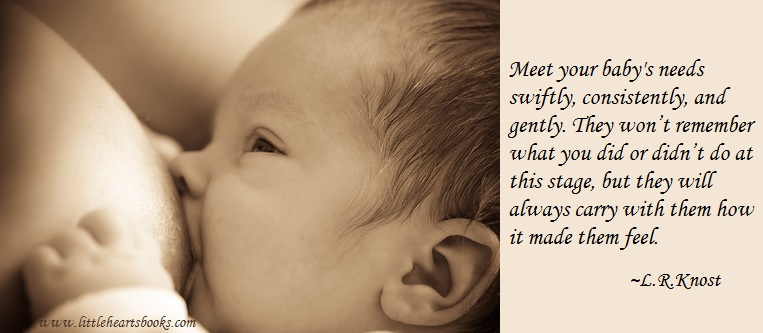 Related links:
Related links:
Love in the Time of Cosleeping
And Baby Makes Three~Surviving the first three months with a newborn!
Breastfeeding, Babywearing, and Bouncing Back into Shape after Baby
A Boy, A Girl, and A Baby~Journey to Gentle Parenting
Baby Led Weaning
Baby Talk
Babywearing Basics Resource Guide
Practical Gentle Discipline Guide
 Award-winnning author, L.R.Knost, is the founder and director of the children's rights advocacy and family consulting group, Little Hearts/Gentle Parenting Resources, and Editor-in-Chief of Holistic Parenting Magazine. Books by L.R.Knost include Whispers Through Time: Communication Through the Ages and Stages of Childhood ; Two Thousand Kisses a Day: Gentle Parenting Through the Ages and Stages ; The Gentle Parent: Positive, Practical, Effective Discipline ; and Jesus, the Gentle Parent: Gentle Christian Parenting the first four books in the Little Hearts Handbook gentle parenting series, and children’s picture books Petey’s Listening Ears and the soon-to-be-released Grumpykins series.
Award-winnning author, L.R.Knost, is the founder and director of the children's rights advocacy and family consulting group, Little Hearts/Gentle Parenting Resources, and Editor-in-Chief of Holistic Parenting Magazine. Books by L.R.Knost include Whispers Through Time: Communication Through the Ages and Stages of Childhood ; Two Thousand Kisses a Day: Gentle Parenting Through the Ages and Stages ; The Gentle Parent: Positive, Practical, Effective Discipline ; and Jesus, the Gentle Parent: Gentle Christian Parenting the first four books in the Little Hearts Handbook gentle parenting series, and children’s picture books Petey’s Listening Ears and the soon-to-be-released Grumpykins series.
November 22, 2011 | Categories: attachment parenting, Bible, birth, breastfeeding, Christian parenting, cosleeping, food, gentle parenting, natural parenting, pregnancy | Tags: attachment parenting, Bible, birth, breastfeeding, Christian parenting, food, gentle parenting, natural parenting, nature, newborn | 21 Comments »
Here’s my very last ~A September to Remember~ guest post! I’ll be sharing a wrap-up soon of all the wonderful ‘vintage finds’ shared by these awesome writers. So enjoy this last, but so very not least, post from a very raw and honest Zoie @ TouchstoneZ. (Loss mentioned)
~~~~Unraveling What I’ve Knit Together~~~
I have early memories of feeling wrong within myself. I may have been four years old the first time I can recall believing I was bad. I know I didn’t have the words to identify the feelings, but I had them. I have never felt that I had the right to be alive. My entire life, I have had this little doubt that crept into every experience and tainted it just enough to keep me from holding it fully to my heart-the belief that I was broken somewhere inside.
I found this poem I wrote fifteen years ago:
Since Puck is Taken
If I show you my poetry
You will see inside of me
Core of polluting coal
50 pack lung-seeming soul
Craven, cowering
Rotten bulb flowering
So I will never show
And you will never know
And it dawned on me why the circular thinking of PPD was so appealing to me. It felt like a comfy wool sweater that was well-worn and familiar. I could slip it on like a protection from the elements of my life that felt raw and chafing. I had worn this sweater before. The only time I can recall taking it off was after the birth of my first child. I felt so empowered that nothing could make me un-love myself.
Then I got pregnant for the second time. And that pregnancy ended in a stillbirth. And I pulled my old sweater on without even noticing. I didn’t take it off for the birth of my second son. I zipped it up and added a hood when I got PPD for the first time. Then, the PPD was a bit better and I took off the hood. I mourned the lost time from the PPD haze but wasn’t ready to take it off yet. It wasn’t until after the birth of my third son and PPD returned that I had had enough. I didn’t want to lose more time to this.
I decided that this time, instead of periodically trying to rip off the sweater and throw it away (because that always ended up with me digging frantically in my mental garbage bins to put it back on) I would caress the sweater. Enjoy its fine knit and excellent fit. I made this sweater. I placed each stitch of wool in myself. It is lovingly crafted to protect me and I honor it for what I have made. I honor myself that at least some small part of me has always been able to see the true me and wrap it up in warmth and protection.
For the first time, perhaps in my life, I feel ready to address a lifetime of depression. I can notice it because of the skills I have been working on: sitting with uncomfortable feelings and holding them. Just holding them.
 Grief
Grief
Grief over the loss of my daughter. Grief over the loss of all the parts of myself I never allowed. Grief over the childhood, teenhood, and adulthood that was black with this belief.
Grief
Grief over how things are not the way I want them to be. Grief over the loss of time and closeness with my children and my husband. Grief over not living my life the way I wanted and for not being as loving with myself and others as I want to be.
Grief
I’ve been allowing grief to arise. I’ve been putting my arms around my heart to hold me together because I’m afraid I’ll fly apart if I even look at these feelings. I’ve been noticing them, crying over them, and watching them come and go as I need them to.
And Anger. There’s a lot of anger underneath the grief, and I’m terrified of anger. I don’t know what to do with it. So, I don’t do anything with it. I sit with it. I can always put my sweater back on if it gets too scary. It’s folded up in my lap for whenever I need to hide.
Don’t forget to head over to check out Zoie @ TouchstoneZ!
 Award-winnning author, L.R.Knost, is the founder and director of the children's rights advocacy and family consulting group, Little Hearts/Gentle Parenting Resources, and Editor-in-Chief of Holistic Parenting Magazine. Books by L.R.Knost include Whispers Through Time: Communication Through the Ages and Stages of Childhood ; Two Thousand Kisses a Day: Gentle Parenting Through the Ages and Stages ; The Gentle Parent: Positive, Practical, Effective Discipline ; and Jesus, the Gentle Parent: Gentle Christian Parenting the first four books in the Little Hearts Handbook gentle parenting series, and children’s picture books Petey’s Listening Ears and the soon-to-be-released Grumpykins series.
Award-winnning author, L.R.Knost, is the founder and director of the children's rights advocacy and family consulting group, Little Hearts/Gentle Parenting Resources, and Editor-in-Chief of Holistic Parenting Magazine. Books by L.R.Knost include Whispers Through Time: Communication Through the Ages and Stages of Childhood ; Two Thousand Kisses a Day: Gentle Parenting Through the Ages and Stages ; The Gentle Parent: Positive, Practical, Effective Discipline ; and Jesus, the Gentle Parent: Gentle Christian Parenting the first four books in the Little Hearts Handbook gentle parenting series, and children’s picture books Petey’s Listening Ears and the soon-to-be-released Grumpykins series.
September 30, 2011 | Categories: adolescence, birth, life, loss, love, PPD, pregnancy, pregnancy loss, stillbirth, stress, teens | Tags: adolescence, loss, PPD, pregnancy, stillbirth | 1 Comment »
As I wrap up ~A September to Remember~ with such a grateful heart to all my friends who shared their ‘vintage treasures’ with me, I’ve chosen a final few posts to share as a lead in to October’s Pregnancy and Infant Loss Awareness Month. Here is a touching post from Theresa at NurturingtheNaturalMama. Be aware that loss is discussed. Be blessed, mamas.
Some say they are too beautiful for this Earth, others say they are so special God hand picks them as his Angels… however you phrase it, Heaven has it’s newest Angel Baby… mine.
The Doctor said I had been “struck by lightening twice”- I have now conceived twice while on the pill. And I get it, with so many women who struggle with infertility out there, how is it that someone like me conceives TWICE on the pill? I have no idea. First time I can chalk it up to perhaps imperfect compliance, this time- I have no explanation. Nonetheless, it happened.
So just as anyone who thought they were being “safe” that finds out they’re pregnant would do, I freaked. I had a complete and utter panic attack. I have a nine month old, I’m still on medication for PPD (the label for which says it can cause birth defects), I’ve been taking the pill, and drinking alcohol! EEK! So I go to the Doctor, who draws some blood… assures me I’m probably early enough where it won’t matter… and talks me down of my stress-cliff. I go home more self assured and semi- ready to try and explain this to my husband.
Needless to say, by the next day the thoughts have sunk in and we’re ready to dig in our heels and make our growing family fit into our tiny apartment, and even spent well into the night before chatting about names and the other idle chit chat that goes along with the beginning stages of pregnancy.
That’s when we got the call.
I would need my bloodwork rechecked the following day at my OBGYN’s office. When my OB called, the conversation started with “I am so sorry…”
What?! You’re sorry about what???….
My HCG levels had dropped, and I was told if I hadn’t already, I was having a miscarriage.
“This is not a viable pregnancy.” What does that even mean? Simple translation: Your baby is dead. Now I get it, to some this seems dramatic- especially for someone who was probably only 6- 8 weeks pregnant. But my baby’s heart was beating. My baby was alive, and is now dead.
The few family members we had told have attempted to console us with the ever popular “something just wasn’t right”, or “your body just wasn’t ready”, or “everything happens for a reason”- and while I can appreciate all of that, it still means my baby is gone. And what makes me feel the worst, is that s/he was so tiny at such an early gestation…. I get a lump in my throat even just THINKING about typing this… that s/he probably got…. gulp….. flushed down the toilet.
I, for all intents and purposes, could have flushed my baby down the toilet.
This devastates me most of all.
But the biggest lesson I have learned from all of this, is that miscarriage is such a silent and lonely struggle. You don’t tell anyone because you don’t want people to think you’re just seeking pity, but then everyone around you is going on with their daily lives, talking about the night out with friend A, or their trip to the bar with friend B, and you were just told your baby is dead. And no one ever knew your baby even existed.
How do you get support? Who do you talk to? You’re certainly not going to go around asking ‘hey, have you had a miscarriage? I just did and I’m not sure what to do next’.
I have at least found the following links which have either brought some peace/support to me, or I feel could help others:
My Forever Child: Memorial Jewelry
We Were Gonna Have a Baby, but we Had an Angel Instead
Bethany’s Baby from Bethany’s blog
And I have found much needed solace in my husband, and in our Church. And tonight, as I rocked my baby A to sleep, I held her a little tighter, kissed her forehead a bit longer, drew in a deeper breath of her warm baby smell, waited for her own breathing to even, and then laid her down and watched…. and then did what I haven’t done in … well, I think my whole life… I prayed. I prayed to whoever this God is, that my other babies stay safe. And that I wanted to thank Him SO much for the blessings I DO have in my life. My two existing, healthy, happy babies… my wonderful husband.. my beautiful step daughter… my family…. my friends…
and then I asked Him, pretty please, if He could just take tonight, to rock my baby to sleep…
Thanks for Theresa for sharing, and don’t forget to check out her site at NurturingtheNaturalMama!
 Award-winnning author, L.R.Knost, is the founder and director of the children's rights advocacy and family consulting group, Little Hearts/Gentle Parenting Resources, and Editor-in-Chief of Holistic Parenting Magazine. Books by L.R.Knost include Whispers Through Time: Communication Through the Ages and Stages of Childhood ; Two Thousand Kisses a Day: Gentle Parenting Through the Ages and Stages ; The Gentle Parent: Positive, Practical, Effective Discipline ; and Jesus, the Gentle Parent: Gentle Christian Parenting the first four books in the Little Hearts Handbook gentle parenting series, and children’s picture books Petey’s Listening Ears and the soon-to-be-released Grumpykins series.
Award-winnning author, L.R.Knost, is the founder and director of the children's rights advocacy and family consulting group, Little Hearts/Gentle Parenting Resources, and Editor-in-Chief of Holistic Parenting Magazine. Books by L.R.Knost include Whispers Through Time: Communication Through the Ages and Stages of Childhood ; Two Thousand Kisses a Day: Gentle Parenting Through the Ages and Stages ; The Gentle Parent: Positive, Practical, Effective Discipline ; and Jesus, the Gentle Parent: Gentle Christian Parenting the first four books in the Little Hearts Handbook gentle parenting series, and children’s picture books Petey’s Listening Ears and the soon-to-be-released Grumpykins series.
September 29, 2011 | Categories: Bible, Christian, Christian parenting, family, gentle parenting, Jesus, life, loss, miscarriage, pregnancy, pregnancy loss | Tags: Bible, Christian, Christian parenting, gentle parenting, Jesus, loss, miscarriage, pregnancy | 1 Comment »
Today’s guest for ~A September to Remember~ is Audra Rundle from Little One Books!
~~Books Spanning Generations~~
 My baby is growing – rapidly. I know this because my belly is growing rapidly. My excitement to meet my little cherub is growing exponentially, and books are a huge part of the stimulus.
My baby is growing – rapidly. I know this because my belly is growing rapidly. My excitement to meet my little cherub is growing exponentially, and books are a huge part of the stimulus.
I am lucky enough to work with children’s books, and while I am reviewing them for work, I find myself daydreaming about reading them aloud to my little one in just a few months. My favorite children’s author at the moment is Mo Willems – particularly Don’t Let the Pigeon Drive the Bus and Pigeon Wants a Puppy – as they are the first children’s books to have me full on belly laughing every time I read them. I can’t wait to do my funny pigeon voice for my little one and make him or her laugh along with me. I’ve tried it out on my husband a few times, and although he does laugh, it may be more at my antics than the pigeon’s.
I recently registered for books and CDs through the Little One Books baby shower registry and had so much fun choosing a mixture of favorites from when I was little (like Dr. Seuss’ Go! Dog! Go!) and new classics, such as If You Give a Pig a Pancake.
I’ve already received my first book for the baby, Shel Silverstein’s The Giving Tree.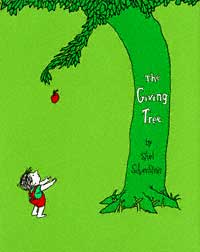 It came from my best friend of 25 years, and I remember her mom reading it to us at her house when we were toddlers. Admittedly, it makes me a bit misty eyed to think of us reading the same classic story to my child now. How neat is it that my son or daughter and I will share nostalgic feelings about the same books?!
It came from my best friend of 25 years, and I remember her mom reading it to us at her house when we were toddlers. Admittedly, it makes me a bit misty eyed to think of us reading the same classic story to my child now. How neat is it that my son or daughter and I will share nostalgic feelings about the same books?!
I would love to hear from you what some of your favorite classic books are from your own childhood that you also read to your little one!
~~~~~~~~~~~~~~~~~~~~~
Little One Books specializes in quality books, music, and video, for children birth through age five, and have personally reviewed and selected each and every item in their store. You’ll find detailed information on why they prefer a particular product in their “Why We Chose” section of each product page.
 Award-winnning author, L.R.Knost, is the founder and director of the children's rights advocacy and family consulting group, Little Hearts/Gentle Parenting Resources, and Editor-in-Chief of Holistic Parenting Magazine. Books by L.R.Knost include Whispers Through Time: Communication Through the Ages and Stages of Childhood ; Two Thousand Kisses a Day: Gentle Parenting Through the Ages and Stages ; The Gentle Parent: Positive, Practical, Effective Discipline ; and Jesus, the Gentle Parent: Gentle Christian Parenting the first four books in the Little Hearts Handbook gentle parenting series, and children’s picture books Petey’s Listening Ears and the soon-to-be-released Grumpykins series.
Award-winnning author, L.R.Knost, is the founder and director of the children's rights advocacy and family consulting group, Little Hearts/Gentle Parenting Resources, and Editor-in-Chief of Holistic Parenting Magazine. Books by L.R.Knost include Whispers Through Time: Communication Through the Ages and Stages of Childhood ; Two Thousand Kisses a Day: Gentle Parenting Through the Ages and Stages ; The Gentle Parent: Positive, Practical, Effective Discipline ; and Jesus, the Gentle Parent: Gentle Christian Parenting the first four books in the Little Hearts Handbook gentle parenting series, and children’s picture books Petey’s Listening Ears and the soon-to-be-released Grumpykins series.
September 23, 2011 | Categories: children's books, family, life, pregnancy | Tags: children's books, parenting, pregnancy | Leave A Comment »
 SIDS: The Latest Research on How Sleeping With Your Baby is Safe | Dr. Sears Official Website | Pare
SIDS: The Latest Research on How Sleeping With Your Baby is Safe | Dr. Sears Official Website | Pare
Dr. Sears is considered the leading authority on gentle/attachment parenting and is a proponent of co-sleeping. Here he examines the research linking decreased SIDS risks with the increase in co-sleeping rates. Dr. Sears~ “Here are some ways to educate parents on how to sleep safely with their baby.”
 Cosleeping and Biological Imperatives: Why Human Babies Do Not and Should Not Sleep Alone
Cosleeping and Biological Imperatives: Why Human Babies Do Not and Should Not Sleep Alone
“In Japan where co-sleeping and breastfeeding (in the absence of maternal smoking) is the cultural norm, rates of the sudden infant death syndrome are the lowest in the world. For breastfeeding mothers, bedsharing makes breastfeeding much easier to manage and practically doubles the amount of breastfeeding sessions while permitting both mothers and infants to spend more time asleep.”
“While many theories are flying around about the cause of SIDS, most focus on the deepness of sleep and how it affects the child’s breathing…Another theory which you may not be familiar with is that the crib mattress itself is to blame for SIDS cases…Arsenic, phosphorus and antimony are intentionally added to crib mattresses by the manufacturers as fire retardants. SIDS was very rare prior to the 1950s when these additives became standard.”
Practical guidelines for safe co-sleeping practices.
“By emphasizing how to create a safe sleeping environment—rather than trying to browbeat parents into avoiding bedsharing—more babies’ lives would be spared. And as an extra plus, more families would also get a better night’s sleep!”
“In Japan, which is a highly modern society, co-sleeping is still the norm. Children sleep with their parents until late childhood, and many move to a grandparent’s bed when a new baby comes along. It is considered beneficial to the child and to the elderly person. It is interesting to note that Japan has the lowest rate of SIDS in the world (James McKenna, PhD).”
“L.A. may be the city of dreams. But, for us parents, Boston is the city of sleep. All of the greatest pediatric sleep doctors practice there…To us, they are superstars: Sears, Brazelton, and, of course, the great Ferber. The man who made “cry it out” a household phrase. A man so famous that he has his own verb: Ferberize. As in, ‘We can’t go out tonight, we’re Ferberizing little Max.'”
“Whereas many Western parents view a child’s sleeping in his own bed as an important milestone toward independence, the Japanese emphasis is on promoting a sense of closeness and security in small children to help them become more confident and capable in the long run.”
Related posts:
The Gift of Breastfeeding
Baby Led Weaning
And Baby Makes Three~Surviving the First Three Months with a Newborn
Bizarre Anti-Cosleeping Ads in Milwaukee a Red Herring?
A Boy, A Girl, and A Baby~Journey to Gentle Parenting
 Award-winnning author, L.R.Knost, is the founder and director of the children's rights advocacy and family consulting group, Little Hearts/Gentle Parenting Resources, and Editor-in-Chief of Holistic Parenting Magazine. Books by L.R.Knost include Whispers Through Time: Communication Through the Ages and Stages of Childhood ; Two Thousand Kisses a Day: Gentle Parenting Through the Ages and Stages ; The Gentle Parent: Positive, Practical, Effective Discipline ; and Jesus, the Gentle Parent: Gentle Christian Parenting the first four books in the Little Hearts Handbook gentle parenting series, and children’s picture books Petey’s Listening Ears and the soon-to-be-released Grumpykins series.
Award-winnning author, L.R.Knost, is the founder and director of the children's rights advocacy and family consulting group, Little Hearts/Gentle Parenting Resources, and Editor-in-Chief of Holistic Parenting Magazine. Books by L.R.Knost include Whispers Through Time: Communication Through the Ages and Stages of Childhood ; Two Thousand Kisses a Day: Gentle Parenting Through the Ages and Stages ; The Gentle Parent: Positive, Practical, Effective Discipline ; and Jesus, the Gentle Parent: Gentle Christian Parenting the first four books in the Little Hearts Handbook gentle parenting series, and children’s picture books Petey’s Listening Ears and the soon-to-be-released Grumpykins series.
August 9, 2011 | Categories: attachment parenting, babywearing, birth, breastfeeding, cosleeping, food, gentle parenting, natural parenting, newborn, parenting guide, pregnancy | Tags: attachment parenting, babywearing, birth, breastfeeding, childhood, children, cosleeping, gentle parenting, natural parenting, nature, newborn, positive parenting, pregnancy, sacrifice, sacrificial parenting | 8 Comments »

Thank you to all of my awesome guests this week for Wishes Week 2011! You gave me a very special birthday gift I will never forget by sharing your wishes with me. Here’s a ((hug)) for each one of you! And now, the ‘wrap up’~

Glimpses My opening contribution to Wishes Week 2011~Glimpses of hope and healing

Meanderings by Rosemary Jones Gritty urban prose by one of my favorite writers…powerful!

My Parenting Wish: Through A Child’s Eyes A beautifully intimate look at compassionate parenting by The Hippie Housewife. Love this!

Birth Wishes Thank you to Becoming Crunchy for this powerful and heartfelt look at birthing options and empowering women…awesome!!!

I wish that I were the Mother that I play at the grocery store. Here is a quirky look at the realities of mommyhood by Jessica, author of Parenting Wild Things!

“What I Wish Every Mother Knew About Babies and Sleep” This wins the prize for most viewed post of the week from Adventures in Mommyhood over at Instinctual Mamas. This is a passionate, informative, and convicting article on meeting babies’ needs gently. Beautiful!

Mommy Wishes From one Mommy’s heart to yours~Mommy Wishes by The Mom: Informed

When God says ‘No’ ~ Wishes Week 2011
~My closing post for Wishes Week~
Thank you to everyone who joined me for Wishes Week 2011! Your comments and ‘presence’ (lol) were much appreciated!
 Award-winnning author, L.R.Knost, is the founder and director of the children's rights advocacy and family consulting group, Little Hearts/Gentle Parenting Resources, and Editor-in-Chief of Holistic Parenting Magazine. Books by L.R.Knost include Whispers Through Time: Communication Through the Ages and Stages of Childhood ; Two Thousand Kisses a Day: Gentle Parenting Through the Ages and Stages ; The Gentle Parent: Positive, Practical, Effective Discipline ; and Jesus, the Gentle Parent: Gentle Christian Parenting the first four books in the Little Hearts Handbook gentle parenting series, and children’s picture books Petey’s Listening Ears and the soon-to-be-released Grumpykins series.
Award-winnning author, L.R.Knost, is the founder and director of the children's rights advocacy and family consulting group, Little Hearts/Gentle Parenting Resources, and Editor-in-Chief of Holistic Parenting Magazine. Books by L.R.Knost include Whispers Through Time: Communication Through the Ages and Stages of Childhood ; Two Thousand Kisses a Day: Gentle Parenting Through the Ages and Stages ; The Gentle Parent: Positive, Practical, Effective Discipline ; and Jesus, the Gentle Parent: Gentle Christian Parenting the first four books in the Little Hearts Handbook gentle parenting series, and children’s picture books Petey’s Listening Ears and the soon-to-be-released Grumpykins series.
August 7, 2011 | Categories: attachment parenting, babywearing, Bible, birth, breastfeeding, children's books, Christian, Christian parenting, cosleeping, food, gentle discipline, gentle parenting, Jesus, loss, miscarriage, natural parenting, newborn, orphans, parenting guide, positive discipline, pregnancy, pregnancy loss | Tags: attachment parenting, babywearing, Bible, birth, breastfeeding, childhood, Christian parenting, cosleeping, food, gentle parenting, Jesus, loss, miscarriage, natural parenting, nature, newborn, orphans, parenting, positive, positive parenting, pregnancy, sacrifice, sacrificial parenting, stillbirth, Uganda | Leave A Comment »
 When Little Hearts/Gentle Parenting Resources asked for everyone to post about their * WISHES*, I jumped at the chance, thinking of how it would be easy to come up with a *WISH* to write about. It turns out that I was wrong…it turns out that I have WAY too many *WISHES* I would like to see come true. I *WISH* I could adopt all of the kids with no parents or bad parents; I *WISH* I could bring peace to the world; I *WISH* I could cure cancer…
When Little Hearts/Gentle Parenting Resources asked for everyone to post about their * WISHES*, I jumped at the chance, thinking of how it would be easy to come up with a *WISH* to write about. It turns out that I was wrong…it turns out that I have WAY too many *WISHES* I would like to see come true. I *WISH* I could adopt all of the kids with no parents or bad parents; I *WISH* I could bring peace to the world; I *WISH* I could cure cancer…
So, I decided to narrow it down to the one *WISH* I have that I am actually doing something about and hope to help be one of the many that are also making it happen. I *WISH* for ALL moms the world over to be “Informed”, to know

their options for themselves and their kids. I *WISH* for all moms to take charge of their pregnancies, their births and their mothering. I want moms to be educated and strong. To know all the options and get to choose for themselves the best road to take. To never be at the mercy of another’s knowledge. There is a saying…I forget how it goes exactly, but, it’s something like, How can I make a choice if I didn’t know the options? Well, my *WISH* is for ALL women to know the options, that way they can make an informed decision and not rely on “experts”, family, friends, or partners to do their deciding for them. Instead of relying on what society tells them to do, they can take a stand and follow their heart and nature.

Maybe my *WISH* seems “out there” or silly or impossible, but, I know that I am not the only person that feels this way. I see proof everyday of others that share this *WISH*. From this blog to all of the other parenting and mom and dad blogs I see…we all belong to this wish. Hopefully in the future, we won’t be needed for this and will move on to even bigger dreams and *WISHES*. Maybe this *WISH* can happen.
So, think about what your *WISHES* are and see if there are any you could help bring to fruition. Maybe today is a day you *WISH* could come true. Maybe today is a day you could help another with their *WISH*.
 Award-winnning author, L.R.Knost, is the founder and director of the children's rights advocacy and family consulting group, Little Hearts/Gentle Parenting Resources, and Editor-in-Chief of Holistic Parenting Magazine. Books by L.R.Knost include Whispers Through Time: Communication Through the Ages and Stages of Childhood ; Two Thousand Kisses a Day: Gentle Parenting Through the Ages and Stages ; The Gentle Parent: Positive, Practical, Effective Discipline ; and Jesus, the Gentle Parent: Gentle Christian Parenting the first four books in the Little Hearts Handbook gentle parenting series, and children’s picture books Petey’s Listening Ears and the soon-to-be-released Grumpykins series.
Award-winnning author, L.R.Knost, is the founder and director of the children's rights advocacy and family consulting group, Little Hearts/Gentle Parenting Resources, and Editor-in-Chief of Holistic Parenting Magazine. Books by L.R.Knost include Whispers Through Time: Communication Through the Ages and Stages of Childhood ; Two Thousand Kisses a Day: Gentle Parenting Through the Ages and Stages ; The Gentle Parent: Positive, Practical, Effective Discipline ; and Jesus, the Gentle Parent: Gentle Christian Parenting the first four books in the Little Hearts Handbook gentle parenting series, and children’s picture books Petey’s Listening Ears and the soon-to-be-released Grumpykins series.
August 6, 2011 | Categories: birth, gentle parenting, newborn, orphans, pregnancy | Tags: birth, childhood, gentle discipline, gentle parenting, newborn, orphans, pregnancy | Leave A Comment »

My sweet, quirky daughter-in-law!
Many, many years ago (more that I will admit to!) a small, scared, pregnant, teenaged girl walked down the aisle to her tall, scared, clueless, young man and they said their “I do’s.” But what were they going to do? No earthly idea! They didn’t have the internet to surf for blogs about parenting and marriage, couldn’t afford the few paltry magazines available on those subjects at the time, and weren’t convinced the way their parents had raised them was exactly what they wanted for their unexpected little blessing. So, they just joined hands and hearts and figured it out the old-fashioned way~through trial and error.
The young girl gave birth prematurely and, after a terrifying NICU stay, brought home her barely 5 lb baby boy. Since the young couple were living on one income and barely able to feed themselves, it made sense to them to breastfeed their little one. Neither one had ever even heard of a lactation consultant and no one at the hospital had mentioned breastfeeding at all, so the two young people just kept working through the cracked, bleeding nipples, engorgement, over-supply, and other issues until they got it figured out~and then they were breastfeeders!
The young girl discovered their first night home how much easier it was to simply take her baby boy into bed with her and breastfeed him when he was hungry~and then they were cosleepers!
Neither one of the young couple had ever read a parenting book and had never even heard the words ‘cry-it-out,’ so the two of them just did what came naturally and picked up their baby when he fussed or grunted or just looked cute and finally found it easier to just pop their little preemie into a baby carrier and tote him around with them wherever they went~and then they were babywearers!
As their precious little guy got bigger and began to explore his new world, the young couple delighted in everything he did and simply moved him and distracted him with songs and toys if he got into things. They couldn’t bear the thought of hurting their son, so just pulled him into their laps for a ‘time-in’ cuddle and chat if he got upset or needed to settle or be redirected~and then they were gentle discipliners!
As time went by and more children entered the family (six, to be exact!) other issues such as education and socialization had to be made, and, while at first the young couple followed the norm and the first two of their children started out in public school, it just didn’t sit well with the parenting style they’d developed. Neither one of them had ever known anyone who homeschooled, so that was a truly scary idea, but public education wasn’t for them and they were just too ‘economically challenged’ to afford any kind of private school. So, they did what they’d always done and withdrew their children from school and figured it out as they went along~and then they were homeschoolers!
Now, this journey might sound like an easy one when summed up this way, but I can assure you it wasn’t! The young couple, my amazing husband and I, encountered strong criticism of our parenting choices over and over through the years from many, and a refusal to accept or accommodate those choices from some. We were warned that our marriage would suffer at the very least, and our babies would suffocate at the worst, if we slept with them in our bed instead of putting them in isolation to sleep. We were informed that my breasts would look like deflated balloons and reach my knees by my thirties if I breastfed beyond a couple of months. We were admonished that our children would grow into spoiled brats if we responded to their needs instead of teaching them to ‘deal with it’ on their own, and would end up criminals if we encouraged and guided them instead of spanking them. We were advised that our children would be uneducated social outcasts (i.e. homeless or still living at home at forty!) if we homeschooled them instead of putting them into the institutional public education system. These challenges to our parenting style were difficult at the time, and they sometimes even resulted in people choosing to de-friend us (not facebook de-friending, silly, in real life!), but they had the powerful positive effect of making us really examine what our beliefs were and, as a result, strengthening and solidifying our beliefs and our family.
As for the dire warnings listed above: Our beautiful, strong, loving marriage is in it’s 25th year; our children all survived cosleeping (our littlest, 14 months, is still safely and contentedly sleeping in our bed); my breasts are, well, normal except for being a couple of cup sizes larger at the moment since I’m breastfeeding, lol; our children are, in order, a 24 yr old pastor (our firstborn son mentioned in the story above who is expecting his first son!), a 22 yr old family therapist, a 17 yr old entering his third year of pre-med, 12 and 5 yr old beautiful and well-behaved homeschooled girls with lots of friends (soooo not social outcasts!), and a sweet and happy 14 month old baby girl.
Our journey to gentle parenting has had another, somewhat unexpected, effect. While we may not agree with others’ parenting choices, we have been on the receiving end of criticism far too long to not have learned this lesson: Gentle parenting is for parents, too! We have learned to respond gently to our friends who don’t agree with us, even when they don’t respond gently to us. Responding with harshness and criticism doesn’t work with adults any better than it does with children! Responding gently to those who disagree with us may or may not affect their parenting choices, but what it does do is model respectful behavior and conflict resolution to our children and, most of the time, preserve dear friendships.
So there you have it~our journey to a breastfeeding, cosleeping, babywearing,

My funny, handsome ‘unexpected blessing’ on his wedding day!
gentle disciplining, homeschooling, happy family of eight! Well, including our awesome son-in-law, daughter-in-law, granddaughter, and grandson-on-the-way, I guess I should say family of 11 2/3! One boy, one girl, and one baby have come a long way, Baby!
 Award-winnning author, L.R.Knost, is the founder and director of the children's rights advocacy and family consulting group, Little Hearts/Gentle Parenting Resources, and Editor-in-Chief of Holistic Parenting Magazine. Books by L.R.Knost include Whispers Through Time: Communication Through the Ages and Stages of Childhood ; Two Thousand Kisses a Day: Gentle Parenting Through the Ages and Stages ; The Gentle Parent: Positive, Practical, Effective Discipline ; and Jesus, the Gentle Parent: Gentle Christian Parenting the first four books in the Little Hearts Handbook gentle parenting series, and children’s picture books Petey’s Listening Ears and the soon-to-be-released Grumpykins series.
Award-winnning author, L.R.Knost, is the founder and director of the children's rights advocacy and family consulting group, Little Hearts/Gentle Parenting Resources, and Editor-in-Chief of Holistic Parenting Magazine. Books by L.R.Knost include Whispers Through Time: Communication Through the Ages and Stages of Childhood ; Two Thousand Kisses a Day: Gentle Parenting Through the Ages and Stages ; The Gentle Parent: Positive, Practical, Effective Discipline ; and Jesus, the Gentle Parent: Gentle Christian Parenting the first four books in the Little Hearts Handbook gentle parenting series, and children’s picture books Petey’s Listening Ears and the soon-to-be-released Grumpykins series.
July 6, 2011 | Categories: attachment parenting, babywearing, birth, breastfeeding, Christian, cosleeping, gentle discipline, gentle parenting, homeschooling, newborn, nonvaxing, positive discipline, pregnancy | Tags: attachment parenting, baby, babywearing, birth, boy, breastfeeding, Christian parenting, cosleeping, gentle discipline, gentle parenting, girl, hearts, little, newborn, nonvaxing, positive parenting, pregnancy | 7 Comments »

Guest post author Jennifer McGrail and kids from The Path Less Taken
The words were my husband’s, and the day was February 19th, 1997. We’d just gotten our first-ever look at our new son, the son that would transform us at once from simply a couple, to a couple of parents. I remember looking at him, his tiny body buried beneath the full head of black hair and the skin he’d yet to grow into. I remember staring at his face, memorizing its features, almost made breathless by a sudden realization: He was a whole, unique, brand-new person. And he was my son.
We would go on to have three more children after that day, and each time I welcomed them with that same sense of awe. What would they look like? Who would they be? Not just extensions of my husband and myself, they were their own little individuals. They had their own personalities, their own indomitable spirits, and their own beautiful souls.
So much of what mainstream parenting advice has to offer is based on the supposition that children need to be controlled, manipulated, and otherwise forced into behaving a certain way. In effect it tells us that they are somehow lesser citizens who wouldn’t possibly do the right thing unless they were prodded, punished, or cajoled into doing so. Gentle parenting believes very much the opposite. At its core, it is simply a call to return to treating children like people. To move away from a top-down system of rewards and punishments to one of love and partnership. It’s not about trying to be a perfect parent, but about striving to be a connected parent. It’s about placing your relationship with your children first, and about giving them the respect and the consideration that they both desire and deserve.
Every parenting decision I’ve made since that first day 14 years ago has been sent through the same filter: Is this manner of treating someone the same way I’d treat anyone whom I dearly loved? Am I showing them gentleness, kindness and respect? Am I treating them the way that I myself would want to be treated? Will this action or these words bring us closer together or will they pull us further apart?
I have made mistakes as a parent to be sure. But as I look back at the last fourteen years, the moments I’ve wished I could take back have always been the moments when I’ve been too reactive. Too quick to speak, and too slow to listen. Too quick to focus on a behavior, and too slow to focus on the child. Too quick to judge, and too slow to understand.
Not once have I regretted being gentle, or thoughtful, or kind. Not once have I ever thought, “What I really needed was to be more tough with them.” No, time and again, the answer was the same: What was needed was more compassion. More kindness. More understanding.
My relationship with my kids is one based on love, trust, and respect. It is a living, breathing organism that only thrives when it is made a priority. It only grows when it is tended to. And just like any other relationship, I get back whatever it is I put in. The best part about a good relationship with your kids though, is that you get it back ten times over.
 Award-winnning author, L.R.Knost, is the founder and director of the children's rights advocacy and family consulting group, Little Hearts/Gentle Parenting Resources, and Editor-in-Chief of Holistic Parenting Magazine. Books by L.R.Knost include Whispers Through Time: Communication Through the Ages and Stages of Childhood ; Two Thousand Kisses a Day: Gentle Parenting Through the Ages and Stages ; The Gentle Parent: Positive, Practical, Effective Discipline ; and Jesus, the Gentle Parent: Gentle Christian Parenting the first four books in the Little Hearts Handbook gentle parenting series, and children’s picture books Petey’s Listening Ears and the soon-to-be-released Grumpykins series.
Award-winnning author, L.R.Knost, is the founder and director of the children's rights advocacy and family consulting group, Little Hearts/Gentle Parenting Resources, and Editor-in-Chief of Holistic Parenting Magazine. Books by L.R.Knost include Whispers Through Time: Communication Through the Ages and Stages of Childhood ; Two Thousand Kisses a Day: Gentle Parenting Through the Ages and Stages ; The Gentle Parent: Positive, Practical, Effective Discipline ; and Jesus, the Gentle Parent: Gentle Christian Parenting the first four books in the Little Hearts Handbook gentle parenting series, and children’s picture books Petey’s Listening Ears and the soon-to-be-released Grumpykins series.
June 9, 2011 | Categories: attachment parenting, birth, Christian, gentle discipline, homeschooling, positive discipline, pregnancy | Tags: adolescence, attachment, attachment parenting, birth, breastfeeding, Christian parenting, discipline, gentle, gentle discipline, gentle parenting, homeschooling, natural parenting, newborn, pregnancy | Leave A Comment »
 Grief
Grief Award-winnning author, L.R.Knost, is the founder and director of the children's rights advocacy and family consulting group, Little Hearts/Gentle Parenting Resources, and Editor-in-Chief of Holistic Parenting Magazine. Books by L.R.Knost include Whispers Through Time: Communication Through the Ages and Stages of Childhood ; Two Thousand Kisses a Day: Gentle Parenting Through the Ages and Stages ; The Gentle Parent: Positive, Practical, Effective Discipline ; and Jesus, the Gentle Parent: Gentle Christian Parenting the first four books in the Little Hearts Handbook gentle parenting series, and children’s picture books Petey’s Listening Ears and the soon-to-be-released Grumpykins series.
Award-winnning author, L.R.Knost, is the founder and director of the children's rights advocacy and family consulting group, Little Hearts/Gentle Parenting Resources, and Editor-in-Chief of Holistic Parenting Magazine. Books by L.R.Knost include Whispers Through Time: Communication Through the Ages and Stages of Childhood ; Two Thousand Kisses a Day: Gentle Parenting Through the Ages and Stages ; The Gentle Parent: Positive, Practical, Effective Discipline ; and Jesus, the Gentle Parent: Gentle Christian Parenting the first four books in the Little Hearts Handbook gentle parenting series, and children’s picture books Petey’s Listening Ears and the soon-to-be-released Grumpykins series.
 Award-winnning author, L.R.Knost, is the founder and director of the children's rights advocacy and family consulting group, Little Hearts/Gentle Parenting Resources, and Editor-in-Chief of Holistic Parenting Magazine. Books by L.R.Knost include Whispers Through Time: Communication Through the Ages and Stages of Childhood ; Two Thousand Kisses a Day: Gentle Parenting Through the Ages and Stages ; The Gentle Parent: Positive, Practical, Effective Discipline ; and Jesus, the Gentle Parent: Gentle Christian Parenting the first four books in the Little Hearts Handbook gentle parenting series, and children’s picture books Petey’s Listening Ears and the soon-to-be-released Grumpykins series.
Award-winnning author, L.R.Knost, is the founder and director of the children's rights advocacy and family consulting group, Little Hearts/Gentle Parenting Resources, and Editor-in-Chief of Holistic Parenting Magazine. Books by L.R.Knost include Whispers Through Time: Communication Through the Ages and Stages of Childhood ; Two Thousand Kisses a Day: Gentle Parenting Through the Ages and Stages ; The Gentle Parent: Positive, Practical, Effective Discipline ; and Jesus, the Gentle Parent: Gentle Christian Parenting the first four books in the Little Hearts Handbook gentle parenting series, and children’s picture books Petey’s Listening Ears and the soon-to-be-released Grumpykins series.
 My baby is growing – rapidly. I know this because my belly is growing rapidly. My excitement to meet my little cherub is growing exponentially, and books are a huge part of the stimulus.
My baby is growing – rapidly. I know this because my belly is growing rapidly. My excitement to meet my little cherub is growing exponentially, and books are a huge part of the stimulus.  It came from my best friend of 25 years, and I remember her mom reading it to us at her house when we were toddlers. Admittedly, it makes me a bit misty eyed to think of us reading the same classic story to my child now. How neat is it that my son or daughter and I will share nostalgic feelings about the same books?!
It came from my best friend of 25 years, and I remember her mom reading it to us at her house when we were toddlers. Admittedly, it makes me a bit misty eyed to think of us reading the same classic story to my child now. How neat is it that my son or daughter and I will share nostalgic feelings about the same books?! Award-winnning author, L.R.Knost, is the founder and director of the children's rights advocacy and family consulting group, Little Hearts/Gentle Parenting Resources, and Editor-in-Chief of Holistic Parenting Magazine. Books by L.R.Knost include Whispers Through Time: Communication Through the Ages and Stages of Childhood ; Two Thousand Kisses a Day: Gentle Parenting Through the Ages and Stages ; The Gentle Parent: Positive, Practical, Effective Discipline ; and Jesus, the Gentle Parent: Gentle Christian Parenting the first four books in the Little Hearts Handbook gentle parenting series, and children’s picture books Petey’s Listening Ears and the soon-to-be-released Grumpykins series.
Award-winnning author, L.R.Knost, is the founder and director of the children's rights advocacy and family consulting group, Little Hearts/Gentle Parenting Resources, and Editor-in-Chief of Holistic Parenting Magazine. Books by L.R.Knost include Whispers Through Time: Communication Through the Ages and Stages of Childhood ; Two Thousand Kisses a Day: Gentle Parenting Through the Ages and Stages ; The Gentle Parent: Positive, Practical, Effective Discipline ; and Jesus, the Gentle Parent: Gentle Christian Parenting the first four books in the Little Hearts Handbook gentle parenting series, and children’s picture books Petey’s Listening Ears and the soon-to-be-released Grumpykins series.
 When Little Hearts/Gentle Parenting Resources asked for everyone to post about their * WISHES*, I jumped at the chance, thinking of how it would be easy to come up with a *WISH* to write about. It turns out that I was wrong…it turns out that I have WAY too many *WISHES* I would like to see come true. I *WISH* I could adopt all of the kids with no parents or bad parents; I *WISH* I could bring peace to the world; I *WISH* I could cure cancer…
When Little Hearts/Gentle Parenting Resources asked for everyone to post about their * WISHES*, I jumped at the chance, thinking of how it would be easy to come up with a *WISH* to write about. It turns out that I was wrong…it turns out that I have WAY too many *WISHES* I would like to see come true. I *WISH* I could adopt all of the kids with no parents or bad parents; I *WISH* I could bring peace to the world; I *WISH* I could cure cancer… their options for themselves and their kids. I *WISH* for all moms to take charge of their pregnancies, their births and their mothering. I want moms to be educated and strong. To know all the options and get to choose for themselves the best road to take. To never be at the mercy of another’s knowledge. There is a saying…I forget how it goes exactly, but, it’s something like, How can I make a choice if I didn’t know the options? Well, my *WISH* is for ALL women to know the options, that way they can make an informed decision and not rely on “experts”, family, friends, or partners to do their deciding for them. Instead of relying on what society tells them to do, they can take a stand and follow their heart and nature.
their options for themselves and their kids. I *WISH* for all moms to take charge of their pregnancies, their births and their mothering. I want moms to be educated and strong. To know all the options and get to choose for themselves the best road to take. To never be at the mercy of another’s knowledge. There is a saying…I forget how it goes exactly, but, it’s something like, How can I make a choice if I didn’t know the options? Well, my *WISH* is for ALL women to know the options, that way they can make an informed decision and not rely on “experts”, family, friends, or partners to do their deciding for them. Instead of relying on what society tells them to do, they can take a stand and follow their heart and nature. 
 Award-winnning author, L.R.Knost, is the founder and director of the children's rights advocacy and family consulting group, Little Hearts/Gentle Parenting Resources, and Editor-in-Chief of Holistic Parenting Magazine. Books by L.R.Knost include Whispers Through Time: Communication Through the Ages and Stages of Childhood ; Two Thousand Kisses a Day: Gentle Parenting Through the Ages and Stages ; The Gentle Parent: Positive, Practical, Effective Discipline ; and Jesus, the Gentle Parent: Gentle Christian Parenting the first four books in the Little Hearts Handbook gentle parenting series, and children’s picture books Petey’s Listening Ears and the soon-to-be-released Grumpykins series.
Award-winnning author, L.R.Knost, is the founder and director of the children's rights advocacy and family consulting group, Little Hearts/Gentle Parenting Resources, and Editor-in-Chief of Holistic Parenting Magazine. Books by L.R.Knost include Whispers Through Time: Communication Through the Ages and Stages of Childhood ; Two Thousand Kisses a Day: Gentle Parenting Through the Ages and Stages ; The Gentle Parent: Positive, Practical, Effective Discipline ; and Jesus, the Gentle Parent: Gentle Christian Parenting the first four books in the Little Hearts Handbook gentle parenting series, and children’s picture books Petey’s Listening Ears and the soon-to-be-released Grumpykins series.

 Jesus’ mother, Mary, didn’t practice attachment parenting when raising little Jesus. The Bible does tell us that she breastfed Jesus, “Blessed is the mother who gave you birth and nursed you.” (Luke 11:27). The culture of the time tells us that she likely coslept with him in the small, one or two room house typical of that period and that she wore him close to her heart in the daylight hours in a wrap to keep him safe from the snakes and scorpions and other dangers that populated the region. So it is certain that she was a breastfeeding mama and almost certain that she was a cosleeping and babywearing mama.
Jesus’ mother, Mary, didn’t practice attachment parenting when raising little Jesus. The Bible does tell us that she breastfed Jesus, “Blessed is the mother who gave you birth and nursed you.” (Luke 11:27). The culture of the time tells us that she likely coslept with him in the small, one or two room house typical of that period and that she wore him close to her heart in the daylight hours in a wrap to keep him safe from the snakes and scorpions and other dangers that populated the region. So it is certain that she was a breastfeeding mama and almost certain that she was a cosleeping and babywearing mama. Pregnancy is a time of introspection, excitement, and, often, anxiety for most new mamas. When those new mamas also have other small children at home, that anxiety can become overwhelming as they worry about how they’ll cope with more than one child and how the current little loves of their life will cope with a new sibling. While these are very valid concerns, there are steps you can take to prepare your child for a new sibling and help them to adjust when the new baby arrives that will also help you to cope with life as a mama of more than one little blessing.
Pregnancy is a time of introspection, excitement, and, often, anxiety for most new mamas. When those new mamas also have other small children at home, that anxiety can become overwhelming as they worry about how they’ll cope with more than one child and how the current little loves of their life will cope with a new sibling. While these are very valid concerns, there are steps you can take to prepare your child for a new sibling and help them to adjust when the new baby arrives that will also help you to cope with life as a mama of more than one little blessing. Related posts:
Related posts: There is no such thing as a ‘miracle’ weight-loss plan, but living a healthy, active life and eating nutritious meals doesn’t have to be all about sweat, sacrifice, and self-discipline, either. It can be about having fun, eating foods you love, and, best of all, it can fit right in with your lifestyle! By following a few basic nutritional guidelines and finding ways to fit exercise into your daily life, you can create your own ‘life plan’ and start moving toward your weight-loss and health goals.
There is no such thing as a ‘miracle’ weight-loss plan, but living a healthy, active life and eating nutritious meals doesn’t have to be all about sweat, sacrifice, and self-discipline, either. It can be about having fun, eating foods you love, and, best of all, it can fit right in with your lifestyle! By following a few basic nutritional guidelines and finding ways to fit exercise into your daily life, you can create your own ‘life plan’ and start moving toward your weight-loss and health goals.









 that precious new life into the world, those same life-giving bodies are failing to provide life-giving (and saving!) nutrition to those precious babies. Why? For some, it is certainly just fear-mongering by those pediatricians using the formula fed babies’ charts or by grandmothers who believe that all babies should be chubby that lead new mothers to believe they have low supply, but there does seem to be an ever-increasing number of babies legitimately labeled as failure-to-thrive with low milk supply labeled the cause.
that precious new life into the world, those same life-giving bodies are failing to provide life-giving (and saving!) nutrition to those precious babies. Why? For some, it is certainly just fear-mongering by those pediatricians using the formula fed babies’ charts or by grandmothers who believe that all babies should be chubby that lead new mothers to believe they have low supply, but there does seem to be an ever-increasing number of babies legitimately labeled as failure-to-thrive with low milk supply labeled the cause.
 Related links:
Related links:



 SIDS: The Latest Research on How Sleeping With Your Baby is Safe | Dr. Sears Official Website | Pare
SIDS: The Latest Research on How Sleeping With Your Baby is Safe | Dr. Sears Official Website | Pare Cosleeping and Biological Imperatives: Why Human Babies Do Not and Should Not Sleep Alone
Cosleeping and Biological Imperatives: Why Human Babies Do Not and Should Not Sleep Alone Parenting – A Much Better Way » SIDS, Cribs and Cosleeping » Print
Parenting – A Much Better Way » SIDS, Cribs and Cosleeping » Print
 Breastfeeding Answers Made Simple – Breastfeeding Reporter – Unintended Consequences
Breastfeeding Answers Made Simple – Breastfeeding Reporter – Unintended Consequences
 My Date With Dr. Ferber
My Date With Dr. Ferber How They Do It In… Japan
How They Do It In… Japan
















